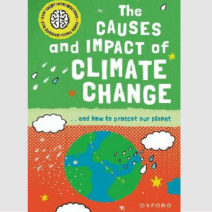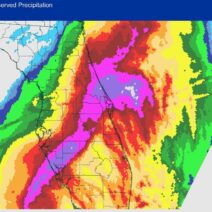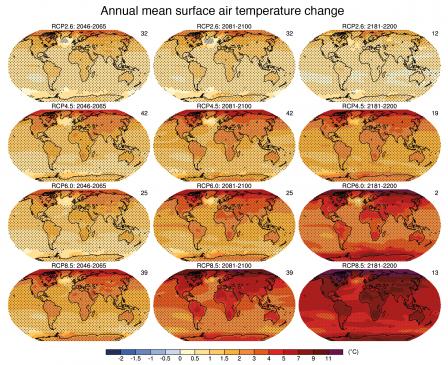Climate change is no longer a distant concern; it is an imminent reality that affects every corner of our planet. As we grapple with the consequences of greenhouse gas emissions and deforestation, understanding the future scenarios of climate change becomes imperative. This discourse examines how dire the implications of climate change might become if current trajectories continue unabated, and elucidates potential avenues for mitigation and adaptation.
The Intergovernmental Panel on Climate Change (IPCC) has issued a series of reports, underscoring various pathways that could unfold depending on human actions. Projections vary significantly based on global emission trajectories, societal resilience, and advancements in technology. The most pressing scenarios emerge when considering extreme resistance to necessary changes in energy consumption and land use, which could lead to severe ramifications for ecosystems and human livelihoods alike.
One of the starkest predictions is the increase in global temperatures, projected to rise between 1.5°C and 4°C (or higher) by the end of the century if current trends continue. A temperature rise of 1.5°C is anticipated to yield catastrophic impacts on biodiversity and weather patterns; for instance, coral reefs, which serve as crucial marine ecosystems, are expected to face drastic declines, affecting marine biodiversity and fisheries that millions rely upon for sustenance.
As temperatures climb, the frequency and intensity of extreme weather events will also escalate. Prolonged heatwaves, persistent droughts, and unprecedented storm systems could become the new normal. For instance, scientists predict that regions already susceptible to flooding will experience heightened rainfall, exacerbating disastrous flooding events. Conversely, areas that are arid may confront intensifying droughts, leading to water scarcity that could destabilize local economies and force mass migrations.
Sea-level rise is another alarming facet of climate change that warrants attention. Estimates suggest that global seas could rise by up to 1 meter by 2100, or even more with ice sheet collapse. Coastal cities, home to millions – New York, Miami, and Jakarta, to name a few – face existential threats, necessitating the urgent implementation of sea walls and other defensive structures. Furthermore, the displacement of populations from low-lying areas could precipitate humanitarian crises, igniting conflicts over resources and territory.
Another critical aspect of the future scenarios relates to the impact on agriculture and food security. As climate change alters precipitation patterns and increases the frequency of extreme weather events, crop yields may decline, leading to food shortages and price spikes. Staple crops, such as wheat and rice, are particularly vulnerable to these changes. The repercussions of failing crops will not only affect nutrition but will also challenge the underlying structures of global food distribution, leading to increased malnutrition and social unrest.
Moreover, as ecosystems become increasingly strained, various species will face existential risks. Numerous plants and animals are unable to adapt swiftly enough to the changing climate, leading to potential extinction events. The loss of biodiversity diminishes the resilience of natural systems, impacting pollination, pest control, and the provision of critical ecosystem services. This, in turn, has profound effects on human economies, healthcare, and overall well-being.
However, it is not all doom and gloom. Future scenarios also present opportunities for innovation and change. Transitioning to renewable energy sources, enhancing energy efficiency, and advocating for sustainable land management practices are vital steps that can mitigate the worst consequences of climate change. Policymakers, businesses, and communities can harness technology, such as carbon capture and storage, to create a sustainable future that limits greenhouse gas emissions.
The role of society in climate action cannot be overstated. Grassroots movements, community engagement, and political activism are vital components for driving systemic change. Public awareness campaigns can galvanize communities around sustainability efforts, fostering a collective responsibility to protect our planet. Educating future generations about environmental stewardship and promoting a circular economy can ensure that the narrative shifts towards resilience and regeneration.
International cooperation is also essential. Climate change transcends national boundaries, and addressing it requires a coordinated approach. Treaties like the Paris Agreement offer frameworks for countries to set ambitious targets for reducing emissions. However, effectively holding nations accountable remains a challenge that necessitates collective will and commitment.
As we consider “How Bad Will Climate Change Get?”, it is crucial to grasp the interconnectedness of the above issues. The more we understand the multifaceted nature of climate change, the more opportunity we have to reshape our trajectory. From individual actions to global policies, every effort counts. The urgency of the situation demands not only recognition of potential dire futures but also an unwavering resolve to enact lasting change.
In conclusion, while the future scenarios of climate change paint a bleak picture, it is imperative to remember that we possess the collective agency to steer the course toward sustainability. The decisions made today will reverberate for generations. By fostering curiosity about the implications of climate change and committing to action, we can pivot from despair towards a landscape of hope and resilience.




